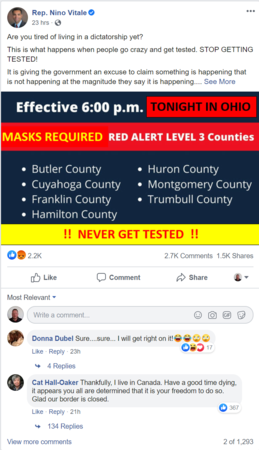B4YOU
All-Pro
- Joined
- Mar 17, 2017
- Messages
- 6,202
- Reaction score
- 10,478
Offline
All the new Global Studies on Schools outside the US suggest keeping schools closed this Fall is senseless / not based in science, and that decision for the US needs to have politics taken out of the equation....
Based on the Science, Schools need to re-open.
___________________________________________________________________________________________________________________________________________________________
However, as weeks turned into months, pediatricians and educators began to voice concern that school closures were doing more harm than good, especially as evidence mounted that children rarely develop severe symptoms from COVID-19.
Continued closures risk “scarring the life chances of a generation of young people,” according to an open letter published this month and signed by more than 1500 members of the United Kingdom’s Royal College of Paediatrics and Child Health (RCPCH). Virtual education is often a pale shadow of the real thing and left many parents juggling jobs and childcare. Lower-income children who depend on school meals were going hungry. And there were hints that children were suffering increased abuse, now that school staff could no longer spot and report early signs of it. It was time, a growing chorus said, to bring children back to school.
When Science looked at reopening strategies from South Africa to Finland to Israel, some encouraging patterns emerged. Together, they suggest a combination of keeping student groups small and requiring masks and some social distancing helps keep schools and communities safe, and that younger children rarely spread the virus to one another or bring it home.
Several studies have found that overall, people under age 18 are between one-third and one-half as likely as adults to contract the virus, and the risk appears lowest for the youngest children.
In six elementary schools, they found a total of three children who had caught the virus, likely from family members, and then attended school while infected. But, as far as the researchers could tell, those younger children didn’t pass the virus on to any close contacts.
School openings across globe suggest ways to keep coronavirus at bay, despite outbreaks
Science explores reopening strategies from South Africa to Finland to Israelwww.sciencemag.org
https://www.washingtonpost.com/heal...86aff4-afb6-11ea-856d-5054296735e5_story.html
https://www.bloomberg.com/news/arti...n-don-t-spread-coronavirus-french-study-shows
What are the measures that should be taken in schools to limit the spread? It's easy to just post an article and make a simple state of "schools should open". It's about as thoughtful as saying "war is bad". Also there is a lack of data on the spread of Covid-19 in school environments.
From the Science article:
“It’s still a bit speculative,” says Fontanet, who shared results from the high school on 23 April and from the elementary schools on 29 June, both on the preprint server medRxiv. But high school students “have to be very careful. They have mild disease, but they are contagious.” Children younger than 11 or 12, on the other hand, “probably don’t transmit very well. They are close to each other in schools, but that is not enough” to fuel spread. At the same time, scientists note that children have more contacts than adults, especially at school, which could offset the lower odds they will spread the pathogen.
This is from Science article link to "Several studies have found" to the ?unpublished? UK study:
Specific evidence in regards to transmission in schools is lacking, due to rapid shutdown at the start of the pandemic. A systematic review of the impact of school closures on the transmission of SARS and COVID-19 found only equivocal evidence for their impact in controlling transmission.
A study from an outbreak around a French secondary school has received some attention, as they found 40% of pupils and staff became infected with no difference between the two groups. What is important in this study, is that almost all the students in the study were aged 15-17 years of age, who appear to have similar disease characteristics to adults. Of the children 14 and under, a very small proportion got infected (it’s not clear how many were students and how many were family contacts). We cannot derive useful information from this study about younger children at present.
The Bloomberg headline is misleading. The study includes a total of "3 probably infected children" in a population of 510 students at 6 schools.




